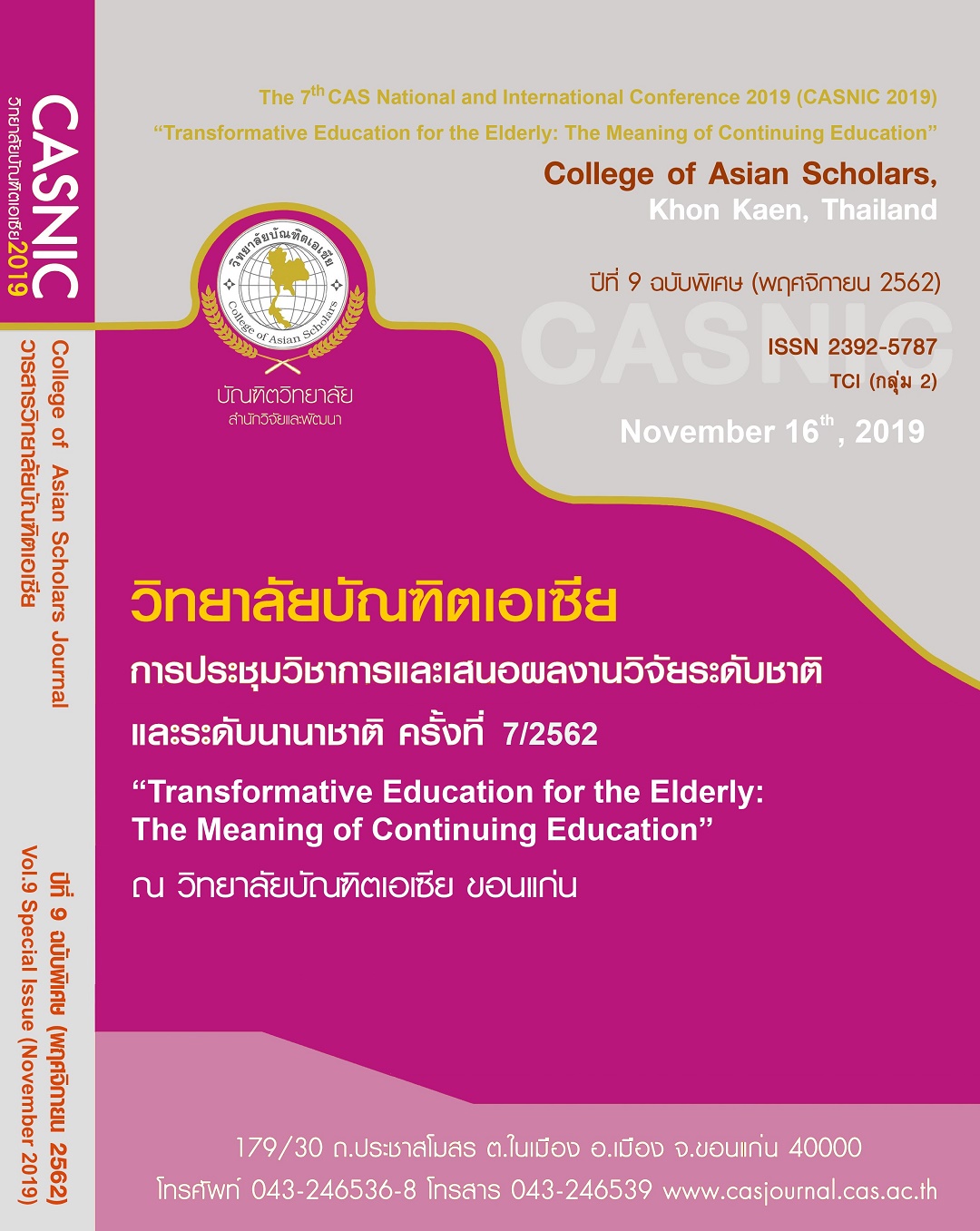ไฟล์ ดาวน์โหลด |
1578036823-17.ED061(133-139).pdf |
|||||||||
|
ชื่อผู้วิจัย แสงเดือน คงนาวัง
|
|||||||||
| บทคัดย่อ ภาษาไทย |
การวิจัยครั้งนี้ มีวัตถุประสงค์เพื่อเปรียบเทียบผลสัมฤทธิ์ทางการเรียนก่อนเรียนกับหลังเรียนของนักศึกษา ระดับปริญญาตรีชั้นปีที่ 1 คณะศึกษาศาสตร์ สาขาการศึกษาปฐมวัย คณะศึกษาศาสตร์ มหาวิทยาลัยภาคตะวันออกเฉียงเหนือ โดยการเรียนรู้ด้วยวิธีชี้นําตนเอง (Self-Directed Learning: SDL) กลุ่มตัวอย่าง ได้แก่ นักศึกษาชั้นปีที่ 1 คณะศึกษาศาสตร์ สาขาการศึกษาปฐมวัย มหาวิทยาลัยภาคตะวันออกเฉียงเหนือ ที่ศึกษาในรายวิชาการพัฒนาร่างกายและสุขภาพของเด็กปฐมวัยในภาค เรียนที่ 2 ปีการศึกษา 2561 ซึ่งได้มาโดยการเลือกแบบ เจาะจง (Purposive Sampling) จํานวน 32 คน เก็บ รวบรวมข้อมูลใช้แบบทดสอบวัดผลสัมฤทธิ์ทางการเรียน วิเคราะห์ข้อมูลโดยการหาค่าร้อยละ ค่าเฉลี่ย ค่าเบี่ยงเบน มาตรฐาน และเปรียบเทียบโดยใช้สูตร t-test for Dependent Samples ผลการวิจัยพบว่า ผลสัมฤทธิ์ทางการเรียนรู้ด้วยวิธีชี้นําตนเอง (Self- Directed Learning : SDL) ก่อนการทดลองมีค่าเฉลี่ย 10.59 ค่าเบี่ยงเบนมาตรฐาน 2.03 หลังการ ทดลองมีค่าเฉลี่ย 15.75 ค่าเบี่ยงเบนมาตรฐาน 1.92 ซึ่งมีค่าเฉลี่ยหลังการทดลองสูงขึ้นกว่าก่อนการทดลองอย่างมีนัยสําคัญทางสถิติที่ระดับ 0.05 |
|||||||||
| คำสำคัญ | ||||||||||
| บทคัดย่อ ภาษาอังกฤษ | The aims of the research was to compare the students’ learning achievement prior and after the learning by (Self-Directed Learning SDL) model of the 1rd Year ot Physical and Health Development of Young Children Course Students, Faculty of Education, Kalasin University. The samples were 33, 1rd year majoring to elementary students used to be trained by the Purposive sampling in the 2nd semester 2019. The research instruments were lesson plans of Purposive Sampling, achievement test, learners’ behavior assessments. The statistics used Means, Percentages, Standard Deviation, T-Test Dependent Sample. The results found; prior trying out, students’ learning by self-directed learning achievement, the students met academic achievement at the Means of 10. 31, 34. 38 percentages, Standard Deviation 2.03 after learning by Self-directed learning model, it was at the Means of 14. 75, 49. 16 percentages, Standard Deviation 1.92 which is higher significantly different at 0.05 level. The aims of the research was to compare the students’ learning achievement prior and after the learning by (Self-Directed Learning SDL) model of the 1rd Year ot Physical and Health Development of Young Children Course Students, Faculty of Education, Kalasin University. The samples were 33, 1rd year majoring to elementary students used to be trained by the Purposive sampling in the 2nd semester 2019. The research instruments were lesson plans of Purposive Sampling, achievement test, learners’ behavior assessments. The statistics used Means, Percentages, Standard Deviation, T-Test Dependent Sample.
The results found; prior trying out, students’ learning by self-directed learning achievement, the students met academic achievement at the Means of 10. 31, 34. 38 percentages, Standard Deviation 2.03 after learning by Self-directed learning model, it was at the Means of 14. 75, 49. 16 percentages, Standard Deviation 1.92 which is higher significantly different at 0.05 level.
|
|||||||||
| Keyword | Teaching, Learning activities, Self Directed Learning | |||||||||
แสงเดือน คงนาวัง
2 บทความ| ชื่อ - สกุล | วารสาร | ไฟล์ |
หน้า |
|
|---|---|---|---|---|

|
แสงเดือน คงนาวัง CAS307 |
การพัฒนารูปแบบการนิเสศ ติดตามประเมินผลงานวิชาการ ของสถานศึกษาโดยใช้บันไดการพัฒนา 5 ขั้น (AKACMEA) | ||

|
แสงเดือน คงนาวัง CAS857 |
การสอนโดยใช้รูปแบบการจัดกิจกรรมการเรียนรู้ด้วยวิธีชี้นําตนเองเพื่อเพิ่มผลสัมฤทธิ์ ทางการเรียนรายวิชาการพัฒนาร่างกายและสุขภาพของเด็กปฐมวัย |

.jpg)
.1.jpg)
1.jpg)
1.jpg)